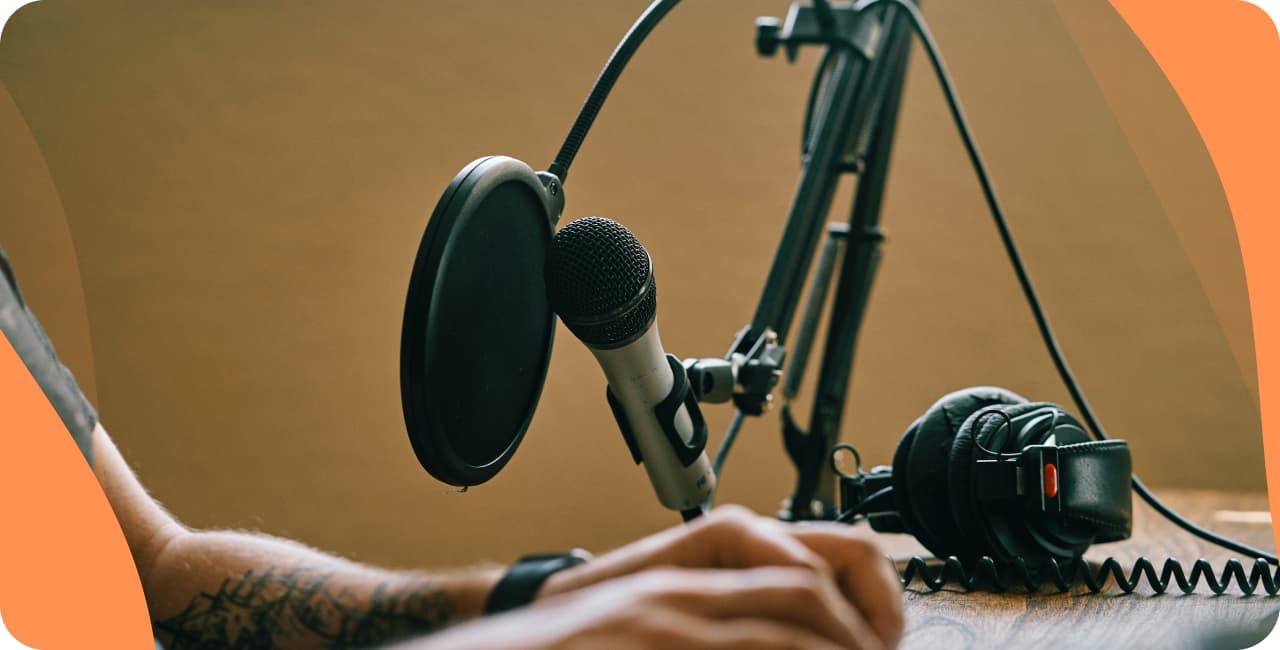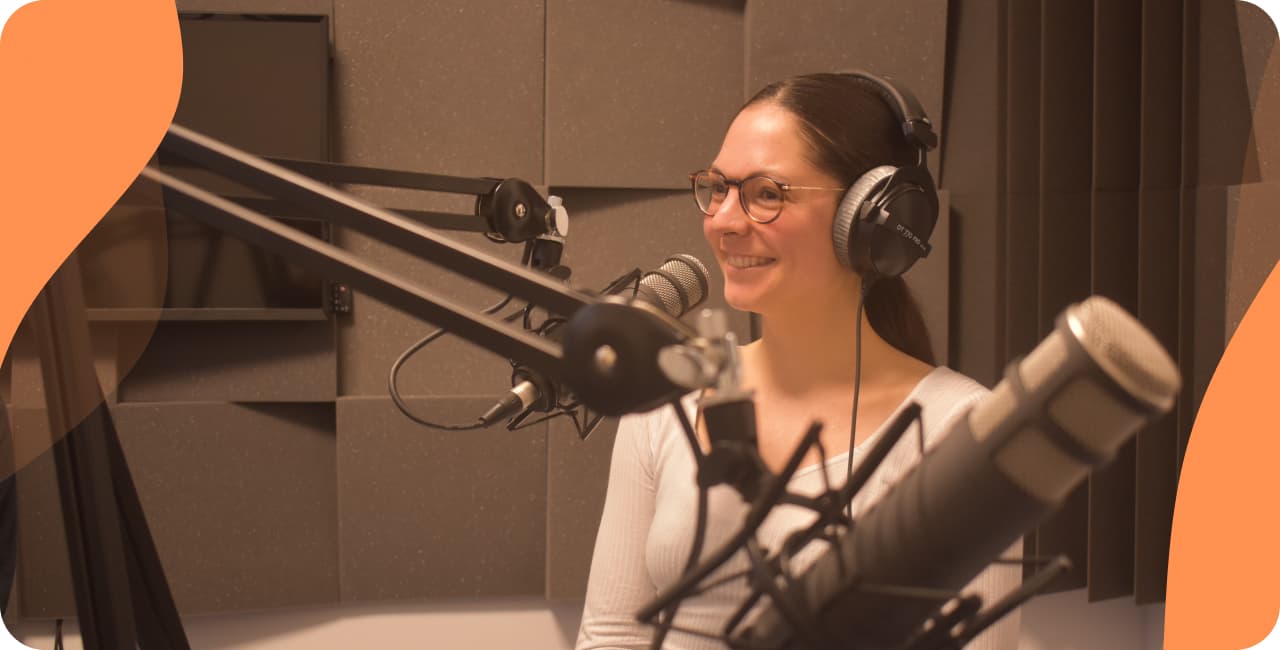Creating a radio broadcasting studio that delivers crisp, professional-quality sound is a goal shared by all serious broadcasters. Crucial to achieving this gold standard audio is soundproofing. When you understand and install good soundproofing measures, unwanted echoes are eliminated and intrusive external noise is muffled. Basically, your audience only hears what you want them to hear.
We’re going to take an in-depth look at the challenges involved in achieving top-quality sound in radio studios and the soundproofing techniques you can use to overcome them.
1/ Key challenges for a radio broadcasting studio
2/ What is the function of a radio studio?
3/ How to start soundproofing your studio
4/ Soundproof for super results
By the end of this article, you should be fully equipped with the knowledge to soundproof your radio broadcasting studio like a pro!
Key challenges for a radio broadcasting studio
So you’ve decided to start a radio station; you have a studio and the equipment, you’ve acquired a local URL from a trusted domains seller, you’ve set up your website, and you’re ready to start broadcasting. But during those initial sound tests, the quality isn’t quite what you hoped it would be.
Achieving the distinctive acoustics needed for a professional-sounding radio broadcast is not a simple task. There could be a number of reasons yours is falling short, but these are the usual culprits:
- Hard materials: If your studio is home to tiled floors, concrete walls, or any other manner of hard surfaces, that will cause poor-quality audio. These materials don’t absorb much sound, causing waves to ricochet around. The broadcast gets jumbled with distorted audio, which falls short of the professional quality you want.
- Parallel walls: A feature of most rooms, parallel walls cause sound waves to bounce back and forth, thus creating an unwelcome echo. You are then dealing with overlapping audio signals which are distracting for the listener and diminish the quality of your broadcast.
- Large spaces: Bigger isn’t always better, especially when it comes to a radio broadcasting studio — because lots of space leads to lots of reverberations. These manifest when the sound waves reflect off surfaces and have a lot of room to travel. This creates a sustained, low-level hum over your broadcast. Not ideal.
What is the function of a radio studio?
To understand the specific soundproofing needs of a radio broadcasting studio, you first need to have a comprehensive understanding of its function. So in case you’re not familiar or need a refresher, let’s cover everything.
- Live broadcasting: The most fundamental purpose of radio. These real-time transmissions require an environment free from disruptions, ensuring that the audience experiences a seamless and professional production.
- Hosting In-Studio Performances: Radio stations often invite bands and artists to perform in-studio. While this provides unique and engaging content for listeners, it also introduces challenges in terms of soundproofing to prevent disruptions to neighbouring spaces.
- Conducting interviews and discussions: Interviews with guests, experts, or celebrities are a staple of radio programming. A well-equipped studio ensures that these conversations are clear, free from disturbances, and professionally conducted.
- Recording and editing: Beyond live shows, a radio studio is also used for recording and editing content. All the extra bits you hear in radio shows, like jingles and voice overs, are pre-recorded and edited before airing.
- Sound engineering and mixing: Skilled sound engineers work in radio studios to ensure that the audio quality is of the highest standard. They manage equipment, fine-tune sound levels, and oversee the technical aspects of broadcasts.
- Monitoring and control: All the equipment involved in audio input and output must be carefully monitored in a radio studio for consistent quality. This means speakers, microphones, and any other kind of recording equipment.

Comprehending the functions of a radio studio reveals specific acoustical challenges that need to be addressed. From minimizing echoes during live broadcasts to creating an environment conducive to high-quality recordings, each aspect demands a tailored soundproofing approach to ensure that the studio operates at its full potential.
How to start soundproofing your radio broadcasting studio
These are the tactics you should employ to reach the heady heights of perfect audio quality.
Identify problematic areas
First, you need to diligently survey every inch of your studio. Make a list of everything that could be causing you problems: parallel walls, capacious rooms, hard surfaces, and corners.
No matter how insignificant it might first appear, even a small occurrence of the things on that list can impact your audio quality. Once you know what the problems are, you can get to work fixing them.
Use pop filters
Enemies of harsh sounds, pop filters are a great investment when you’re soundproofing your studio. They create a buffer between the speaker and the microphone, which mellows bursts of air like plosives and sibilance.
This is particularly useful for muting any loud breathing which, while only human, can be an unpleasant listening experience. Pop filters are available at various prices, so you needn’t spend a fortune if you’re just starting out.
Install foam tiles in your radio broadcasting studio
Another not-so-secret soundproofing weapon is the trusty foam tile. These little beauties can do wonders for a room’s acoustics. They absorb sound waves wonderfully and reduce that annoying reverberation.

Place them strategically on parallel walls and corners to see your audio quality improve exponentially. These are a worthwhile investment if you want your broadcast to sound professional.
Get a professional sound booth
If you have big goals, like creating a commercial radio station, you may want to consider going all in. For those who have the budget, a professional sound booth might be the way forward.
This is a costly option no doubt, but it will guarantee the professional-grade sound of your dreams. They come as a fully set up studio designed to make your broadcasting experience as smooth as possible.
Or a portable sound booth
If you’re not broadcasting in just one location, you’ll need to work a little differently. Make sure you have an internet phone service and cloud storage for your audio files. For recording purposes, a portable sound booth provides a nomadic solution.
They still isolate the speaker and deliver audio with great clarity but the compromise for flexibility is you may still get some background noise. However, the quality is still good and if you’re always on the move, this is the obvious choice.
Rethink your space
Get imaginative about how you can use your space in the best possible way. If your current recording studio has too many problems and you don’t have the budget to soundproof a large space, think smaller.
Do you have a wardrobe that could be repurposed into a makeshift recording studio? Much less surface area requires fewer materials. You can even improvise with carpet or blankets to reduce the cost even more.
Combine techniques
Sometimes it’s good to mix it up, particularly when it comes to soundproofing, You might need to experiment with your unique space to see what yields the best results. Try some foam tiles, pop filters or bass traps.
Or, if you’re working within budget constraints, use a combination of purpose-bought soundproofing materials and household items, like duvets and pillows. There may be some trial and error, but with some patience, you can fine-tune the soundproofing of your studio till it meets your expectations.
Professional consultation
If your studio has more demanding challenges, perhaps due to unique architecture, it may be time to turn to the professionals. If you do this, make sure to seek someone local who understands material availability and prices in your area.
A good way to do this is to look at their website domain name. Say that you’re in Anguilla, you’d check if it ends in “.ai” — this is a good sign they are a local authority on the matter. These experts will provide tailored recommendations that will save you time and help you focus on the most important areas.
Optimize your radio studio set-up
Soundproofing is the first step towards great quality broadcasting, but it’s all for nothing if you don’t take care of the other components of your radio studio. Think about the best place for your microphone. The optimal position will depend on the type of microphone you have and how many people are speaking.
Another part of your set-up to consider is speaker placement. They are positioned in a way that minimizes reflection e.g. at ear level and with each speaker being an equal, symmetrical distance from the person’s location.
Altogether, every part of your studio layout should be carefully considered to optimize your acoustics.
Testing and fine-tuning
Once you have your soundproofing measures in place and you’ve optimized your studio layout, it’s time to get testing. Dedicate several sessions to recording and reviewing audio to catch any lingering issues.
You may find that there are still adjustments to be made, which can be frustrating, but persevere and you’ll get there. Then, once your fine-tuning is done, you’ll finally be ready to broadcast from your home studio like the professionals do.
Soundproof for super results
If you want professional results then soundproofing is a necessary step. To achieve the highest-quality audio, this may require some investment, but the difference you’ll hear will make it worth it.
If your budget is small, start with a few materials and DIY solutions, then slowly work your way up to the more expensive options. Get creative with your space and options and your radio broadcasting studio will be producing audio you can be proud of.
Ready to start broadcasting from your radio studio? Launch your radio station today!
